There are 38 tortoise safe plants on this list that you can feed your tortoise as well as 6 you should avoid.
Tortoises are herbivorous reptiles, meaning that they consume only vegetation for their diet.
This handy guide has a variety of the best plants that tortoises can eat. We’ll also touch on any toxic plants for tortoises so that you know exactly what to avoid.
In addition to those in this list, we have also created a printable chart you can use which has 117 different types of plants, fruits, vegetables, and more which you can download or print for free.
See the following for the full list: Tortoise Safe Plants List (opens in a new window).
To print it just click the print icon or press ctrl + P.
To learn more about tortoise diets you can check our article about what tortoises eat.
Understanding the tortoise diet is critical, especially for pet tortoise owners, as it ensures the health and longevity of these beloved reptiles. A balanced diet is particularly vital for baby tortoises, who require a specific mix of nutrients to support their growth.
Table of Contents
Why should I buy plants for my tortoise?
Not only can plants provide your tortoise’s main food source, but using live plants for tortoises also creates an incredibly enriching environment for them. Having plants in your tortoise’s enclosure helps create natural-feeling surroundings, helping to keep your pet calm and free of stress.
For pet tortoises, it’s important to remember that the type of plants available in their enclosure should be similar to what they would encounter in the wild. Outdoor enclosures for Mediterranean tortoises, for instance, should include bedding plants and grasses native to their natural environment.
This is because they give your reptile plenty of places to explore and hide, both in their enclosure and out in the backyard. As larger terrestrial reptiles, tortoises need plenty of room to roam. While they can be kept adequately in a tortoise table or other enclosure, it’s best to let them out into the yard as well.
This means that you could grow several plants that tortoises can eat to keep your reptile happy on its backyard wanderings. You can also provide tortoise table plants to give them some cover and food in their smaller enclosure. Some common houseplants make good tortoise table plants.
Giving your tortoise a varied diet is vital to the welfare of your reptile. Providing a good choice of edible plants for your tortoise is always preferable to relying on shop-bought salads. Growing your own plants helps avoid any harmful pesticides from affecting your pet.
Your tortoise should mainly feed on grasses and salad vegetables, but throughout this list, we’ll provide some common alternatives that can be great additions to your reptile’s diet. We’ve broken down our choices of plants into several groups, to make it easier to navigate the list.
The most important thing for tortoise keepers to consider is the safety and nutritional value of the plants they offer. From the lush large leaves of the prayer plant to the fiber-rich diet provided by native grasses, a tortoise’s health often reflects the quality of its diet.
Best Tortoise Safe Plants
Crops, Fruits, and Vegetables
This group of plants contains common crops and salad plants that your tortoise can eat. Cultivating these plants helps provide a healthy, varied diet for your tortoise.
We’ll also cover some common fruits and vegetables that you can use to add some variation to your tortoise’s diet. Not every tortoise will happily eat fruit, so check to see if your tortoise species has eaten fruits before.
1. Apples

Apples can be a tasty tortoise treat if fed occasionally. Some tortoises cannot effectively process the high amounts of sugar present in fruits. Make sure to remove the pips from any apples you feed to your tortoise, as these contain cyanide.
2. Arugula

Also known as rocket, arugula (Eruca vesicaria) is a common salad crop that tortoises adore. It is readily available and easy to grow. Most types of tortoise will enjoy arugula, and it is also one of the best plants for a Sulcata tortoise.
It’s best not to feed arugula to your tortoise every single day, as this plant carries goitrogens. In excessive amounts, these compounds could result in bladder or kidney stones.
3. Bananas

Bananas are another great treat to give your tortoise if they are accustomed to eating fruit. Species that cannot handle fruits should not eat bananas because of their high potassium content.
4. Cucumbers
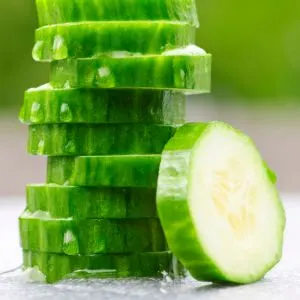
Cucumbers can be a nice hydrating treat for your tortoise in hot conditions. While your tortoise will get some vitamins from cucumbers, their nutritional value is pretty low.
Additionally, for those who keep different plants for their tortoises, it’s essential to recognize that species of tortoise like the Greek tortoise may have a particular affinity for certain plants, while others such as the Russian tortoise might prefer a variety.
5. Iceberg Lettuce

One of the most stereotypical vegetables that many people feed to tortoises, iceberg lettuce is fine for tortoises but has very little nutritional value. Like cucumber, it can be a good treat to use in hotter weather to help cool and hydrate your tortoise.
6. Kale and Collard Greens
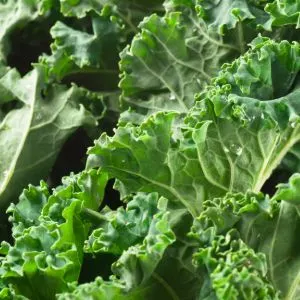
Used by us humans as a super-food, kale and its close relatives Collard Greens (part of the Brassica oleracea family) are also great for your tortoise. These leafy green vegetable are extremely nutritious and relatively easy to grow. Curly kale is one of the most common varieties.
7. Lambs Lettuce
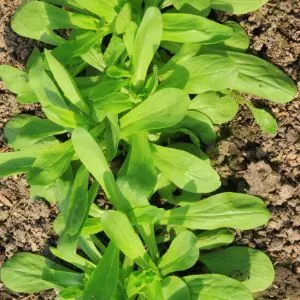
Lambs Lettuce (Valerianella locusta), also called Corn Salad, is a common salad leaf used in the bags of mixed salad that you can find at grocery stores. However, it is also one of the best plants that tortoises can eat. You should be able to grow it without much trouble.
8. Pears

Pears will be enjoyed by fruit-eating tortoises as an occasional treat, as long as the pips are removed. Some tortoises aren’t gastronomically equipped to eat fruit, so check if your species can handle the high sugar levels.
9. Strawberries
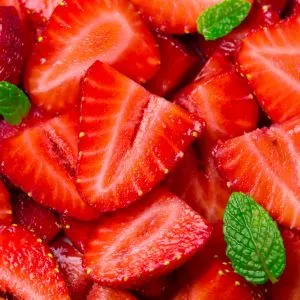
A good choice of treat for tropical tortoises, strawberries shouldn’t be fed to types of tortoises that aren’t known fruit eaters. The leaves can also be fed, providing they are young and fresh.
10. Watercress
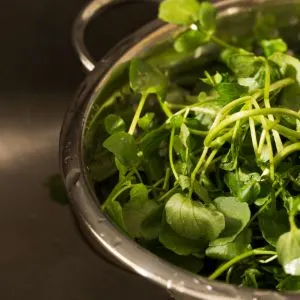
Another common salad plant that can be fed to tortoises is watercress (Nasturtium officinale). Variants such as spineless varieties of plants are particularly sought after by tortoise trust members, as they are safer and easier for tortoises, like the Indian Star Tortoise, a threatened species, to consume.
Watercress is an aquatic plant that is widely cultivated for our salad bags. Again, like many of these salad leaves, watercress should be fed in moderation as an additional part of your tortoise’s diet.
Cultivated Flowers
Tortoise safe plants not only enrich the diet of these animals but can also recreate a piece of their natural habitat, making them feel less like captive desert tortoises and more like wild animals roaming freely.
You may be a keen horticulturalist, filling your backyard with beautifully vibrant flowers like Marigolds or Pansies. But your tortoise also loves these flowers as food! Growing a variety of these common flowers in your garden can provide a welcome snack for your tortoise as it roams around.
11. Gazania

Also known as the “Treasure flower”, Gazanias (Gazania rigens) are native to South Africa but have spread to some areas of the United States. Gazanias are a good flower species to cultivate if you own a desert tortoise species like a Sulcata.
Gazanias resemble large yellow and orange daisies with dark inner markings.
12. Geraniums

These perennials are hardy flowers that are extremely popular with tortoises. They are pretty easy to grow and are popular garden flowers thanks to their vibrant colors such as pinks and oranges. The Geranium family also includes cranesbills which are also safe to feed your tortoise.
13. Hollyhocks

Part of the wider Mallow family, Hollyhocks are another tortoise favorite and may be rapidly devoured if planted in your yard. These tall flowering plants come in an assortment of colors from pink to red, with broad green leaves. Your tortoise can eat any part of the Hollyhock.
14. Marigolds

While some picky tortoises won’t approach Marigolds, these vivid yellow flowers are still edible plants for tortoises. However, you must make sure that your tortoise is eating Marigolds from the Calendula family, such as Field and Pot Marigolds.
The Tagetes branch of the Marigold family can release chemicals that may harm your tortoise. This family of Marigolds will have very densely-frilled flower heads, whereas Calendula Marigolds look similar to large yellow daisies.
15. Pansies and Violas

Pansies and Violas are essentially the same flowers, coming in a huge variety of beautiful colors. Both are popular choices among gardeners and are enjoyed by tortoises as well. Both the flowers and leaves of these plants are suitable to be eaten by tortoises.
For those seeking a great choice of plant, the redfoot tortoise, as well as breeds like leopard tortoises (Geochelone pardalis), would appreciate the colorful flowers and rich fiber content of plants like the desert willow in their diet.
16. Petunias
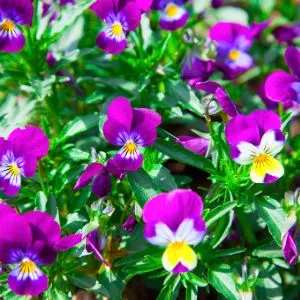
The Petunia family are famous for their colorful star-shaped flowers and can be fed to your tortoise in moderate amounts. Petunias are related to toxic nightshade plants, but there has never been any evidence of poisoning among tortoises from eating Petunias.
17. Violets

Similar to Pansies and Violas, Violets are pretty flowers that can be eaten by tortoises. Common varieties of Violets include Dog Violet (Viola canina) and Sweet Violet (Viola ordorata).
Grasses
Grass should be one of the staples of your tortoise’s diet, especially if they can roam about in your backyard. Most grasses will be suitable for your tortoise to eat, but we’ll highlight a few specific types that might go down well with your pet.
18. Carex Sedge

Carex sedges are part of a wide-ranging group of perennial ornamental grasses called Cyperaceae. They can be found globally and have long blade-like leaves. When used in pots, Carex sedges are great plants for a tortoise habitat as they provide cover as well as food.
19. Couch Grasses

Probably the most common types of grass in the world, Couch grasses are ideal for tortoises as they will form the majority of their diet. Your tortoise will also help to keep this fast-growing grass in check, as it is seen as a weed in America and can quickly colonize large areas.
20. Fountain Grasses

Fountain grasses, also known as Pennisetum, are a varied group of grasses that can include huge specimens like Elephant grass. Other variants of Fountain grasses are some of the best plants for Sulcata tortoises because they grow naturally in their wild habitat.
Enthusiasts in warmer climates often look to add the Aldabra tortoise to their collection, and for such large species, ensuring a constant supply of compatible plants like fountain grasses and various types of clover is vital.
21. Oat Grasses
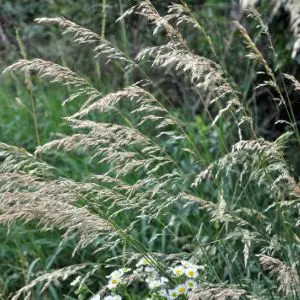
Oat grasses are also known as Arrhenatherum and are another common type of grass. Their stalks look a little like oat crops, which is how they get their name. These grasses are great dietary staples for tortoises.
Houseplants
Being a tortoise keeper means ensuring that their habitat is as close to their natural setting as possible. For example, the Hermann’s tortoise, which thrives in warm climates, would greatly benefit from having a variety of houseplants in its enclosure, such as lemon balm and Plantago lanceolata.
Some of the best plants for a tortoise habitat are common varieties of houseplants. Not only will your tortoise be able to eat these plants, but they will also provide fantastic cover and decoration for your tortoise’s enclosure.
Bear in mind that if you buy a houseplant from a store, you should only put new growths from that plant within biting distance of your tortoise. Putting houseplants fresh from the store into your tortoise’s enclosure can run the risk of your tortoise consuming harmful pesticides.
22. Boston Ferns

These lush green ferns can grow pretty quickly, but some strategic nibbling from your tortoise should help keep them in check. Boston Ferns are perfect plants for a tortoise enclosure if you want to provide a tropical feel.
23. Bromeliads

The Bromeliads are a large, varied family of plants. They have fleshy leaves and some members of the family can function without much water, such as air plants. Many can also retain humidity and water which makes them great plants for your tortoise enclosure.
24. Spider Plants

Another good tortoise table plant is the Spider Plant (Chlorophytum comosum). This common houseplant provides great cover for your tortoise as well as a source of food if they need a snack. Make sure to only put new growth of a Spider Plant into the enclosure to prevent contamination by pesticides.
Shrubs and Trees
Tortoises aren’t just confined to eating smaller plants. They can sink their beaks into shrubs and trees as well. We’ll cover some of the best shrubs and trees that you can use as plants for your tortoise habitat.
25. Bramble
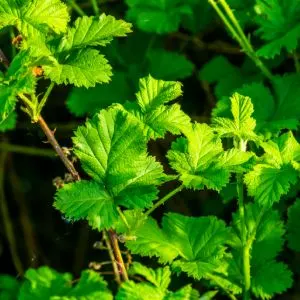
It is important to stress that only the leaves of the bramble should be eaten by tortoises. This common shrub, which some may also consider a weed, can be left to grow wild as long as you keep an eye on what parts your tortoise eats. Some species may also be able to eat the fruits, but check before you allow this.
26. Elm
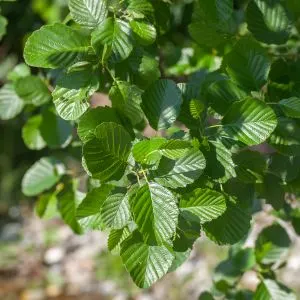
If you have Elm trees in your yard, chances are that your tortoise may take an inquisitive bite of the leaves. This will be fine, although some tortoises may not like the taste. In that case, they’ll simply avoid the tree. Young, new growths are the ideal pieces to provide for your tortoise.
27. Hebe

Hebes are a family of ornamental shrubs that are native to New Zealand. They make excellent cover for tortoises and can also be eaten safely.
28. Hibiscus
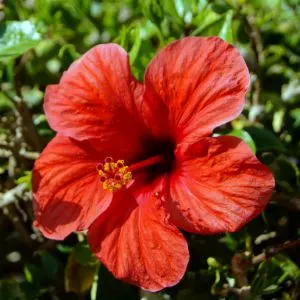
A great addition to any tortoise enclosure is the tropical hibiscus, which, when fed in small amounts, can provide essential trace elements beneficial to your pet’s diet.
The Hibiscus family covers flowers to shrubs and is part of the wider Mallow family. Tortoises can eat both the vibrantly colored flowers and leaves of Hibiscus plants.
29. Lilac

Lilacs, also known as Syringa vulgaris, are flowering shrubs that have spread to America. Lilac flowers are usually found in pastel shades of pink, purple, and white. Tortoises can consume both the flowers and leaves.
30. Mulberry

The famous English scientist Charles Darwin had a mulberry tree in the garden of his home. Like Darwin, tortoises will enjoy mulberry trees. They can eat the leaves, but only fruit-eating tortoises should be allowed to consume the berries.
Succulents
Succulents make excellent tortoise table plants, especially for desert-dwelling tortoise species. Tortoises can also eat succulents and providing desert tortoises with succulents may help mimic their natural habitat.
Most succulents should be fed to your tortoise in moderation. While they aren’t especially toxic, eating too many succulents could cause laxative effects in your tortoise.
31. Agave

This desert succulent can be fed to your tortoise, but it is wise to do so in moderation as it can cause laxative symptoms. Agave is one of the best plants for a Sulcata tortoise enclosure as it helps mimic their natural environment.
32. Aloe Vera

While toxic to other pets such as cats and dogs, Aloe Vera is fine for turtles to eat in moderate amounts. These spiky succulents make great plants for a tortoise habitat, especially for desert specimens.
33. Echeverias and Mother of Pearl
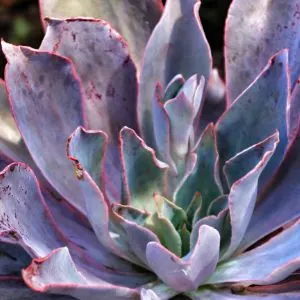
These two succulent types are pretty similar, both resembling rose-shaped leaves. The flowers, leaves, and stems can all be consumed by tortoises in moderation. These succulents also make great tortoise table plants as they are relatively small, providing some natural décor.
34. Gasterias and Haworthias
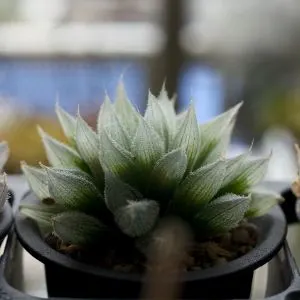
These two types of spiky succulents are broadly similar, with a thick bushel of sword-like stems. Both are suitable for tortoises to eat and make good plants for a tortoise enclosure.
Weeds
Along with grasses, various common weeds are also a great dietary staple for tortoises. If you’re letting your tortoise roam your garden, they might help you out with the weeding! Here are a few common weeds that your tortoise will enjoy the most.
35. Clovers

There are several types of clovers prevalent across the United States, and most can be eaten by your tortoise. In moderation, your tortoise can happily munch on clovers. These weeds also contain a lot of nitrates which are important minerals for your tortoise.
36. Dandelions

Dandelions are one of the most commonly known plants that tortoises can eat. These common weeds are easy to acquire and your tortoise can eat virtually the whole plant. Dandelion greens are always sure to go down well!
37. Mustards

Various Mustard plants, such as Hedge Mustard and Garlic Mustard, can be eaten by tortoises in moderate amounts. This is because they can possess goitrogens which can sometimes lead to the development of kidney stones.
38. Vetches
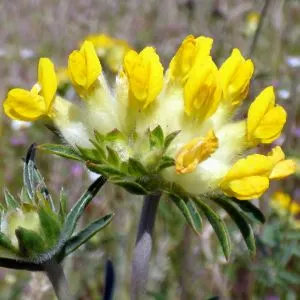
Vetches are quite nutrient-dense weeds that can be eaten by your tortoise in moderate amounts. Excessive consumption may lead to laxative effects. Vetches such as Common Vetch and Kidney Vetch can all be eaten.
Toxic Plants to Avoid
While tortoises can consume quite a large variety of plants, some plants are poisonous to tortoises. Here is a list of some of the more common toxic plants for tortoises.
1. Celery

One of the main vegetables to avoid feeding your tortoise is celery. This is because celery contains tiny calcium crystals called oxalates that can result in severe internal irritation if ingested by your tortoise.
2. Crocuses

Crocuses are completely toxic to tortoises, and this includes every single part of these plants.
3. Daffodils

Daffodils are another bulb plant, like Crocuses, that are completely toxic to tortoises. If your tortoise consumes daffodils, they may experience convulsions, diarrhea, and vomiting. In serious cases, their heart may also stop.
4. Foxgloves

Foxgloves are also toxic plants for tortoises and can be both cultivated and wild. Every part of a foxglove will be toxic for your tortoise.
5. Peonies

These large flowers are poisonous to tortoises and can result in vomiting and potentially death.
6. Rhubarb

These fleshy stalks contain oxalates, which are tiny calcium crystals that can cause severe irritation to your tortoise, especially when ingested.
Common questions
What live plants are safe for tortoises?
Safe live plants for tortoises include dandelion, hibiscus, clover, endive, and various grasses. Always ensure plants haven’t been treated with pesticides, as these can harm tortoises.
Are plants good for tortoises?
Yes, plants provide essential nutrients and fiber in a tortoise’s diet and stimulate natural foraging behavior, contributing to their overall health and wellbeing.
Can you put a cactus in a tortoise tank?
Yes, certain types of cactus, like the spineless prickly pear, can be put in a tortoise tank as they are safe and edible for tortoises, but avoid cacti with spines or glochids to prevent injury.
Should you wash the plants before feeding them to your tortoise?
Yes, you should wash plants before feeding them to your tortoise to remove any potential pesticides, chemicals, or dirt that may harm the tortoise.
Wrapping up
That wraps it up for this list of the best plants for indoor and outdoor tortoise enclosures.
While we have covered a lot of species in this list, there are even more. If you missed the free list at the top you can check it out here. The list contains even more plant species that you can feed to your tortoise safely.
This list should give you a good idea of the kinds of plants that you can cultivate in your garden to provide a varied diet for your tortoise. Many of these plants such as succulents and houseplants can make excellent tortoise table plants to give your tortoise some cover.
We hope you enjoyed this list! Feel free to comment below if you have experience with using these plants with your tortoise.
Now that you know what plants to use, have a look at our guide for setting up an outdoor tortoise enclosure.

L.D. Hines
Thursday 18th of April 2024
Would you know about, Garden Coreopsis (Coreopsis tinctoria) Also known as Golden Tickseed or Goldenweave? A yellow flower with a maroon bud in the middle.
Julie Thorp
Saturday 7th of October 2023
Thank you for this helpful guide--The photos really make a difference for most of us, too. Just wanted to make a few clarifications: your photo under "petunias" is actually pansy. (Though I think they are turtle-safe as well). Also, the "clover" photo, is actually oxalis, also called shamrock. But as it is high in oxalate, it might be unsafe. (The two are a bit tricky to tell apart). Thank you again for this list.
Peter Aretin
Sunday 30th of April 2023
My Greek tortie likes a certain amount of dandelion blossoms, but shows little interest in the leaves. She really likes the flowers from the crab apple tree, but I'm not sure these are good for her. She will enthusiastically eat green beans and the plant itself. Lettuce endive (chicory) is a favorite, as are mustard greens, but they don't stay green long in the fridge.
Steve Chicoine
Friday 9th of September 2022
What about shrubs such as ninebark, burning bush. Id like to plant a couple of these but worry the leaves may be toxic.
Julie
Wednesday 16th of November 2022
@Steve Chicoine,
Burning bush for sure is toxic
I don't know about Ninebark leaves,flowers, or berries;but, I do know the bark is used to induce vomiting!